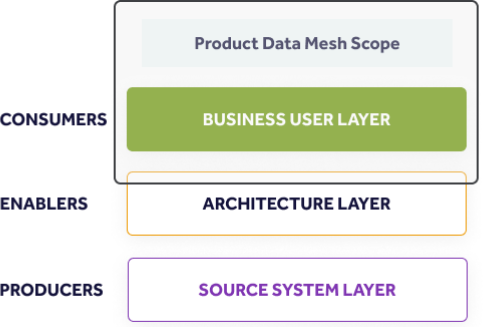
Numbers always make sense! So, consider this:-
Two perspectives are derived from the number analysis examples. First, these examples do not sound new, and second - there is a continuous effort to improve the product data quality.
It is important to mention the term 'data’, in the number of examples above, was employed in a broad manner to encompass various types of data that organizations may encounter. However, within the context of this viewpoint, it's important to note that the essence of the term 'product data’ does not change fundamentally.
Product data, by definition – is a comprehensive view of a product's characteristics, attributes, and information throughout its lifecycle i.e., from the cradle to the grave and back to its re-creation. It's important to note that 'product' here isn't limited to physical objects. A product represents any tangible or intangible entity with a purpose and lifecycle.
If you hail from a product development background or play a role in any phase of the life cycle of a product, you would embrace the truth that, at the core of effective decision-making, there lies a common denominator: product data. From concept to the end of life, the transformation of product data is immense, and so is the information about its accessibility, usage, traceability, transparency, and above all, visibility at enterprise levels. In the modern world, we seek such product information in two categories – real-time and on-demand.
The convergence of two seemingly distinct terms, "Product" and "Mesh," within the context of “Data”, can mold their significance and purpose in fascinating ways. It's like taking a fresh look at something familiar and discovering new possibilities. The fusion of these terms will redefine the very essence of how we perceive and harness product data to achieve business value. In that spirit,
“The convergence of terms Product, Mesh within the context of Data will redefine the very essence of how we perceive and harness the product data to achieve business value”
Product Data Mesh is “a strategic business approach that leverages qualitative insights and enterprise product data to drive tangible and measurable business outcomes.”
“Product Data Mesh is architecture-agnostic, seamlessly integrating with existing enterprise systems, minimizing disruptions while maximizing results”
It harnesses qualitative business questions to enhance decision-making and drive sustainable results across the product lifecycle.
Importantly, it remains architecture-agnostic, seamlessly integrating with existing enterprise systems and minimizing disruptions while maximizing results. Given its agnostic nature, the underlying architecture changes or evolution do not impact the approach.
With the Product Data Mesh approach, we aim to address the complexity of the business decision-making process, which heavily depends on the accuracy of the product data to yield reliable outcomes.
Let's consider a discrete manufacturing enterprise that periodically launches new products with various business functions like product engineering, marketing, sales, manufacturing, and after-market operations. Each of these functions employs specific applications in the enterprise landscape tailored to their needs. For instance, engineering and product development utilize CAD/CAM/PLM systems, manufacturing relies on ERP/MOM/MES systems, marketing integrates PIM/PXM systems with DAM, sales operate with CRM systems, and so on. However, challenges arise when functions need to collaborate with each other, based on the product data available via the integration of multiple systems, for making enterprise-level business decisions. Based on our experience, business challenges are articulated in the form of qualitative questions, as we mentioned earlier, which may look like:
The complexity of these qualitative questions needs no further explanation. We intend to address them by Product Data Mesh.
In the enterprise world, managing product data is like nurturing a garden with two distinct types of plants:producers and consumers. Each has a unique role, and it's as if we're cultivating a rich ecosystem of information.
The producers of product data are like diligent gardeners, carefully planting the seeds of knowledge. They sow information, nurture it, and help it grow into a robust harvest. These producers may include various departments, software systems, and stakeholders within the enterprise, all contributing their valuable insights.The various departments own disparate applications to create different product data attributes during its lifecycle.
On the other side, the consumers of product data are like eager wildlife searching for sustenance in this data garden. They seek information to support decision-making, operations, and innovation. These consumers come from different parts of the enterprise, from marketing to finance, each with their unique appetite for data. In this case, the various departments would consume the product data differently and maintain records in their own applications to give a different life to the product.
In the real world, producers and consumers play dual roles in the business context. As defined, the purpose of Product Data Mesh is to drive tangible and measurable business outcomes. Hence, in the context of Product Data Mesh, the consumer is the executive-level business user who has the signatory authority and budget to make decisions at an enterprise level. The business user may be an end user however, it is not mandatory. The illustrations given below clearly outlines the scope of Product Data Mesh to drive outcomes.

Illustration 1 - Product Data Mesh Scope
To see Product Data Mesh in action, we have to look at our business questions to understand how the Product Data Mesh approach would help achieve the business outcomes. Consider illustrative 2, as shown below: -
Illustration 2 – Product Data Mesh Approach in Action
The following are the key steps in the approach: -
The term “Value Product” is defined as a package of necessary product data attributes to deliver business value.
Value Product has some guiding principles attached to it: -
These refined principles emphasize the tailored nature of Value Products, their adaptability,adherence to core principles, inclusivity in access, non-disruptive integration, and the necessity of vigilant governance.
The Product Data Mesh represents a visionary approach designed to tackle the persistent challenges faced by business executives in pursuit of sustainable business growth. It offers a structured framework for achieving clarity and eliminating ambiguities by transforming key questions into practical business scenarios. These scenarios, in turn, are empowered by a data-driven strategy centered around creating Value Products.
This innovative approach fosters collaboration across various business units and, perhaps more critically, challenges stakeholders to shift their focus from abstract, qualitative discussions to a tangible business value perspective. By doing so, it promotes a more streamlined and efficient decision-making process, reducing the time it takes to deliver actual business value. However, it is vital for enterprises to exercise caution, ensuring that they do not overburden themselves with the creation of value products that could potentially introduce new data-related challenges.
The true power of the Product Data Mesh lies in its ability to provide constantly updated product data, ensuring that decision-makers in the boardroom always have access to the most current and relevant information. The "always fresh" availability of data is absolutely crucial for addressing the complexities of decision-making at the highest level of the organization. It empowers executives with the insights they need to make informed, agile decisions, ultimately propelling the company toward sustainable growth.
Jagmeet Singh, Vice President and Head of Cyient’s Digital Advisory
Jagmeet is the Vice President and Head of Cyient’s Digital Advisory practice. He is a digital practitioner with more than two decades of experience. His expertise spans across domains and he is certified in AWS, Oracle, Agile, IoT, Design-Thinking, Blockchain, and Big Data Analytics. He has published 20+ white papers and has 3 IPs in digital product innovation and supply chain management.
Cyient (Estd: 1991, NSE: CYIENT) is a global Engineering and Technology solutions company. We collaborate with our customers to design digital enterprises, build intelligent products and platforms and solve sustainability challenges. We are committed to designing tomorrow together with our stakeholders and being a culturally inclusive, socially responsible, and environmentally sustainable organization.
For more information, please visit www.cyient.com
Cyient (Estd: 1991, NSE: CYIENT)delivers Intelligent Engineering solutions for Digital, Autonomous and Sustainable Future
© Cyient 2024. All Rights Reserved.